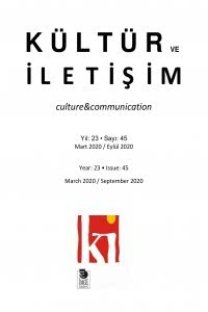The Stories We Tell
Bildiğimiz ya da bildiğimizi sandığımız şeylerin büyük çoğunluğunu kişisel olarak deneyimlemiyoruz. Bildiklerimizin çoğunu başkalarının anlattığı öykülerden öğrenmemiz olgusu öykü anlatmanın en temeli insani ihtiyacı ve etkinliği olduğuna işaret ediyor. Bu çerçevede sorulması hayati önem taşıyan bir soru var: bu öyküleri kim anlatıyor? İçinde şekillendiğimiz kültürel ortamı belirleyen bu öykülerin evrimi genelde insani iletişiminin evrimine paraleldir. Bu evrimin günümüzdeki aşaması karanlık bir tablo oluşturuyor: başat öykü anlatıcı olan medya özellikle televizyon, suç ve şiddet öykülerini tarihin hiç bir döneminde olmadığı sıklıkta zihinlerimize sokuyor. Bu durumun temel nedeni olarak garanti kar peşinde koşan medya kuruluşlarının sahipliğinde görülen tekelleşme ve bu tekellerin programları dünyanın her yerinde pazarlayabilmek için farklı kültürlerce anlaşılabilecek -çoğunlukla şiddete dayalı- formüllere göre üretmeleri gösterilebilir. Alternatif öykülerin önünü tıkayan bu fiili sansür karşısında üç temel politik eylem tasavvur edilebilir: seçici izleme; medya analizine dayalı eleştirel iletişim eğitimi; ve Kültürel Çevre Hareketi gibi sivil toplum örgütlenmeleri.
Anahtar Kelimeler:
medya çalışmaları, George Gerbner, medya ve anlatı
The Stories We Tell
Most of what we know, or think we know, we have never personally experienced. The fact that we learn most of what we know from the stories told by others indicates that telling stories is one of the fundamental human needs and activities. Within this framework, there is a vital question to be asked: who is telling those stories? The stories, which determine the cultural environment within which we are shaped, follow an evolutionary path that is parallel ta the evolution of human communication in general. The current stage of such an evolution paints a dark picture: As the main story-tellers, the media, and particularly television, insert crime and violence stories into our minds in a pace that is never seen in history. It is possible to identify the concentration of media ownership and the fact that programs are produced according to a formula based on violence, as the main reasons behind this situation. Formula-based programs, in turn, guarantee cross-cultural understandability which is necessary since those programs are marketed all over the world. One can imagine three major political activities against this de facto censorship that blocks the telling of alternative stories: selective viewing; critical communication education based on media analysis; and citizen organizations such as The Cultural Environment Movement.
___
- Auletta, Ken (1993). "What Won't They Do," The New Yorker, May 17· 45-46.
- Entman, Robert M. (1994). "Violence on Television News: News and 'Reality' Programming in Chicago." A Report Commissioned and Released by the Chicago Council on Urban Affairs.
- Gerbner, George (1995). "Television Violence: The Power and the Peril" in Gail Dines and Jean M. Humez (eds) Gender, Race, and Class in Media: A Critical Text Reader, Sage Publications, inc.: 1995.
- Johnstone, John W, C, Darnell F. Hawkins, and Arthur Michener (1994). "Homicide Reporting in Chicago Dailies." Journalism Quarterly 71(4): 860-872.
- ISSN: 1301-7241
- Yayın Aralığı: Yılda 2 Sayı
- Başlangıç: 1998
- Yayıncı: İmge Kitabevi Yayınları
Sayıdaki Diğer Makaleler
Oryantalist Söylem ve Japonya: Meiji Dönemi (1868-1912) Japon Kadın Hareketi Tarihini Okumak
Politik Kamera: Çağdaş Hollywood Sinemasının İdeolojisi ve Politikası
Protestan İş Ahlakı Hala Varlığını Sürdürüyor mu?
Ataerkillik Üzerine Geliştirilen Teoride Paradigma Değişimleri: "Kadınlar"ın Özneleştirilmesi
Kimlik Mekanları: Küresel Medya, Elektronik Ortamlar ve Kültürel Sınırlar
Ortak Bir Şeyleri Olmayanların Ortaklığı
